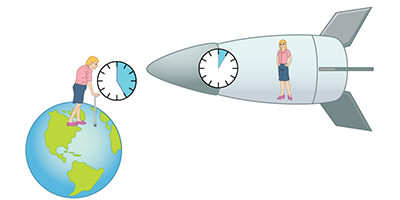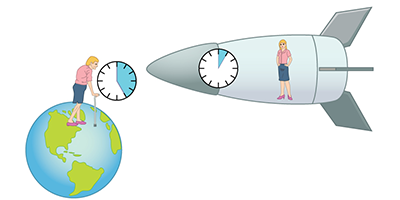Relativity is Right on Time, Again
Special relativity predicts that a twin in a high-speed rocket, as viewed by her Earth-bound sister, will have a slower-ticking clock. A precise test of this time dilation, first performed in 1938, involves observing the frequency shift—or “ticking” change—in the electronic transitions of fast-moving ions. An update of this type of experiment using lithium ions has now verified special relativity’s prediction with unprecedented accuracy—a result that provides additional constraints on quantum gravity models.
Relativistic time dilation derives from Lorentz invariance: a physical measurement should be independent of the orientation or speed of the lab’s reference frame. As fundamental as Lorentz invariance might sound, certain quantum gravity theories, such as string theory, predict its violation at a very small level. Physicists have therefore devised a whole host of Lorentz violation tests, one of which involves measuring time dilation.
To carry out such a test, Benjamin Botermann of Johannes Gutenberg-University, Germany, and his colleagues looked for the relativistic Doppler shift in lithium ions accelerated to a third of the speed of light at the Experimental Storage Ring in Damstadt, Germany. The team stimulated two separate transitions in the ions using two lasers propagating in opposite directions with respect to the ion motion. The experiment effectively measures the shift in the laser frequencies relative to what these transition frequencies are for ions at rest. The combination of two frequency shifts eliminates uncertain parameters and allows the team to validate the time dilation prediction to a few parts per billion, improving on previous limits. The result complements other Lorentz violation tests that use higher precision atomic clocks but much slower relative velocities.
This research is published in Physical Review Letters.
–Michael Schirber





